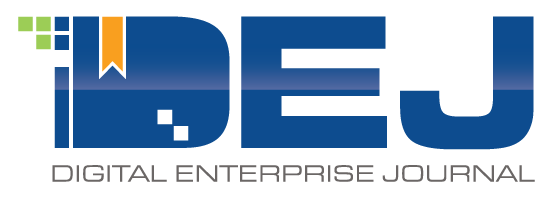DEJ’s 2020 study identified 19 areas that were shaping IT performance markets. Over the last 12 months, our research showed significant changes in dynamics that user organizations should be mindful of when planning their strategies for managing IT performance. Some of these changes are due to the global health and economic crisis, but the majority are just a continuation of trends that we were seeing in 2019 and 2020.
This DEJ’s Research Note is based on insights from more than 3,200 organizations and highlights the top 20 areas that user organizations should consider when defining their strategies for managing performance of IT services in 2021. These findings and areas will also serve as the basis for DEJ’s annual study on The State of IT Performance Management.
1 – Data and creating actionable insights are the key
DEJ’s 2018 study showed that when it comes to addressing key challenges of IT performance, an actionable context of data is the key enabler. This year’s research shows that trend further escalated and when analyzing top goals that organizations are trying to achieve in 2021, having the right data and turning it into actionable insights is a central focal point of effective management across all of the key use cases. Also, providing actionable insights comes with increasingly important challenges for organizations, such as scalability, cost, complexity of correlation, etc.
Figure below shows 2 interesting trends over the last 5 years. While the strategic importance of data and actionable context is exponentially increasing, the percentage of organizations that are reporting a lack of data as a challenge doesn’t show any significant change. This is mostly due to the inability to collect the right data that is needed to have full visibility into their environments.
The evolution of using the data in analytics in the enterprise goes along this path: context – actionable insights – answers. Each of these steps requires a data strategy to be a core part of an organizations’ IT performance efforts and its execution is critical for achieving key goals.
2 – True digital transformation taking shape
Digital transformation is one of those concepts that is getting a lot of traction with user organizations, but it has been overused and it is causing confusion, as it means different things to different people. In 2021, we are starting to see that it’s definition is becoming more straightforward and it really comes down to – technology innovation at high levels of user experience that provides business value and competitive differentiation.
DEJ’s 2020 study on IT transformation showed 2.1x increase in the number of organizations reporting that software is in the core of their business strategy since 2017 and that number increased by another 63%% over the last 12 months. Enabling this process requires new technology capabilities and DEJ’s research shows 34% increase in the number of organizations interested in deploying value stream management (VSM) in 2021.
Additionally, for effectively managing this process it is important that organizations establish a closed loop across all of these three areas (innovation, user experience and business outcomes) and constantly improve the value they are delivering.
3 – Observability – beyond the 3 key pillars
DEJ’s recent study, “19 Key Areas Shaping IT Performance Markets in 2020” shows that the value proposition of Observability hits all of the key challenges they are experiencing. As Observability is getting more traction and becoming one of the “hottest” concepts in the market, there are many aspects of it that organizations should be aware of.
The way it is commonly defined, the concept of Observability includes three key pillars – logs, metrics and traces. However, the true value of Observability lies in four major areas: 1) creating actionable insights; 2) managing change and complexity; 3) enabling innovation and 4) providing optimal user experience.
Therefore, it is important for them to understand that Observability is not a class of technology or a single market, but a management concept and they should evaluate different solutions based on the best fit for their unique requirements.
4 – Connecting the dots to business outcomes
DEJ’s upcoming study on total biz impact shows major gaps between the perception of business and IT executives about the importance of IT performance technologies for achieving key business goals and the actual value that these solutions are providing to the business. The research shows that deployments of these solutions have a very strong impact on business outcomes and enables organizations to gain competitive advantage. However, to be able to calculate that impact, organizations have to take a step-by-step approach which includes analyzing challenges, technology capabilities, applying correct selection criteria, etc.
The ability to translate technology value proposition into the language of business is becoming more important and, also, a critical part of technology evaluation and selection. Therefore, both technology vendors and user organizations need to have methodologies in place for connecting the dots between technology capabilities and desirable business outcomes.
5- Monitoring redefined
Forty-six percent of organizations in DEJ’s research reported that the IT performance management tools they were previously using are not effective in managing dynamic environments, such as microservices, cloud or Serverless. This is driving a major shift in the monitoring market and it is expected to further redefine this space as more organizations embark on their modernization projects.
Managing these modern environments requires new approaches and capabilities and some of the key attributes of new generation monitoring can be summarized as:
- Context-based actionable insights
- Automated topology mapping
- Short time to value
- No blind spots
- Data in business context
- Automation and AI capabilities
- Real-time search, analytics, visualization capabilities
- Correlation capabilities
- Scalability
- No manual configuration
- OpenTelemetry enabled/ready
- Full stack coverage
- Coverage across production and pre-production environments
- Integrate into existing DevOps tool chain
- Closed loop remediation
6- Proactive management is a must
The inability to prevent performance issues before users are impacted has been reported as the #1 challenge for managing IT performance for 6 years in a row. However, the research shows that only 31% of organizations are making it a strategic goal to address this issue. DEJ’s research shows that organizations are, on average, losing annually $36 million due to this issue.
Proactive and predictive IT performance management should not only be a feature in technology solutions, but a key selection criteria and a major part of organizations’ strategies. Additionally, addressing this challenge requires more than just deploying new technology capabilities. DEJ’s research shows that 40% of organizations are looking to adopt a customer-centric approach for managing IT. Seventy-four percent of these organizations reported that proactively preventing performance issues is the key attribute of customer centric IT and they are making changes in their processes, culture and organizational structure to achieve this goal.
7 – Managing user experience impacts all key business goals
DEJ’s research shows that the importance of managing user experience (both customer and employee) is significantly increasing year-over-year. 74% of organizations in DEJ’s research reported that user experience is the only true measure of IT performance. DEJ’s upcoming study on total business impact also shows that the value of these solutions impacts each of the key business areas and provides actionable insights that go way beyond traditional performance metrics.
The research shows that organizations that are leveraging advanced capabilities for user experience are saving $827,000 annual on unused software licenses only. These solutions also help organizations discover other inefficiencies, proactively prevent performance issues, help in multiple areas on employee management, (on boarding, remote work, etc.). However, one of the often hidden benefits of these solutions is enabling innovation – from freeing up IT resources that can be used for innovation and growth to managing the overall impact that digital transformation has on the business.
8 – Cost of not acting is skyrocketing
DEJ’s research revealed some staggering numbers regarding how much organizations are losing due to inefficient practices for managing IT performance. What is even more alarming is that these numbers are significantly growing year-over-year.
A small portion of this growth can be attributed to more people working remotely over the last 12-15 months, but the research showed a similar trend and trajectory even before the pandemic. The increase in Cost of Not Acting is predominantly due to the following; 1) changes in IT environment and increased complexity of managing performance; 2) organizations becoming more dependent on technology when looking to achieve key business goals; 3) increase in customer expectations for performance and experience. These three trends are expected to become even more prominent in the future and organizations need to start gaining more visibility into their internal inefficiencies and calculate their financial impact.
9 – AIOps at a crossroads
DEJ’s recent research shows that the promise and value proposition of AIOps is well aligned with user organizations’ operational and business goals. The concept of AIOps is still not well defined and is often associated with more tactical use cases, such as alert fatigue, diagnostic and remediation. However, the research shows that organizations that are getting the most out of their AIOps deployments are predominantly using these solutions for streamlining business processes, analyzing technology impact on business outcomes and understanding interdependencies between service elements. Additionally, leading organizations in TPO deployments are 52% more likely to be leveraging these capabilities for proactively preventing performance issues.
As a result, the AIOps market is at a crossroads and technology vendors in this space have three options: 1) continue with focusing on solving tactical issues; 2) help user organizations understand how they can help with their desirable business outcomes; 3) jump on the Observability bandwagon and bring more context-based automation to SRE and DevOps teams.
10 – “Manual” as a repelling word
Automation cuts across each of the key areas of managing IT performance and organizations are increasingly understanding that to automate at least some of their processes is no longer optional. DEJ’s research shows 37% increase in manual tasks that are “not humanly possible to complete” over the last 12 months. The research also shows 2.4x savings from automating provisioning infrastructure and computing resources. Lastly, 72% of organizations reported the importance of automation for driving innovation as “High” or “Very High”.
Managing complex and fast changing environments and using technology as a competitive advantage without automation capabilities with a suboptimal amount of manual work is no longer possible. Additionally, the research shows that “no manual configuration” is very high on the list of priorities when selecting IT performance monitoring solutions.
As IT automation is playing a more important role in the enterprise, it is important to mention that leading organizations in managing IT performance are taking a strategic approach when selecting where these capabilities should or should not be deployed. However, the research shows that the number and types of processes where manual work creates inefficiencies and deteriorates the value of the technology is significantly increasing.
11 – Microservices management takes center stage
Emergence of microservices is one of the most interesting dynamics in IT performance markets over the last several years and that has come about for three reasons – 1) this type of technology hits home with business leaders and their key goals, such as creating new revenue sources, gaining competitive advantage, etc.; 2) management process includes many new aspects from employee skill set, monitoring, managing the full lifecycle, complexity, optimizing cost, etc.; 3) organizations who understand that modernization is not a project that can be put on the backburner as any time wasted significantly impacts their competitive position.
DEJ’s research shows that organizations leading the way in managing microservices experienced a 26% higher revenue growth, as compared to all others. Therefore, a decision of modernizing IT environments by deploying microservices should not be a matter of “if” or even “when” for organizations, as many of their competitors are already gaining advantage and experiencing business benefits from this approach. The main question for these organizations is “how” to effectively take this step and three key things that they should be looking at when selecting technology partners to help them with this process are – simplicity, efficiency and time to value.
12 – Understanding cost of management
Creating actionable insights from complex environments, having full stack visibility, meeting new user expectations for experience, deploying new monitoring capabilities – obviously comes with a cost. DEJ’s research shows that the cost of Observability is a challenge for 58% of organizations. Additionally, the majority of these organizations don’t have capabilities to calculate this cost prior to starting their Observability initiatives.
Organizations understand that effectively managing modern environments will require increased management spend, but they are looking for more upfront visibility and to avoid any surprises about levels of their investments. Pricing models for management tools, cost of data processing and cloud services are just some of the areas that include many variables and organizations need to: 1) have pointed questions to their service providers to ensure that their management process is more predictable; 2) have a better understanding about the anatomy of the cost for managing modern environments and use it when selecting vendors and providers that are the best fit for their requirements.
13 – Importance of scalability
DEJ’s research shows that the complexity of IT systems increased 3.2 times over the last 24 months. Addressing challenges of these modern dynamic environments requires highly scalable management solutions that are able to support processing and collecting more data.
DEJ’s research shows an average increase of 65% in the number of organizations that are using scalability as the top selection criteria over the last 24 months. The research also shows that leading organizations in managing IT performance are 84% more likely to be selecting IT performance management solutions by predicting future amounts of data to be processed. This shows that ongoing changes in the market are also redefining how user organizations are defining scalability, with elasticity becoming increasingly important.
14 – Enabling a Cloud native journey
DEJ’s most recent research showed that driving innovation to surpass cost savings as the top driver for deploying cloud services. The research also shows that cloud native organizations are 64% more likely to create new revenue sources. Deciding to become a cloud native organization results in a number of measurable business benefits. Companies that choose to go on this journey should be aware that, from the IT performance management perspective, managing these environments is a completely new game from many perspectives. The importance of data and actionable insights in these environments becomes even more important, as organizations need to make educated decisions in a variety of areas such as providers, tool sets, expectations, etc.
However, the research shows that, when executed and managed right, taking a cloud native approach is well worth the effort. For example, DEJ’s research shows that organizations that are adopting Serveless are 46% less likely to experience revenue loss due to performance related slowdowns in application releases, as compared to all others.
15 – Everything in a business context
Answering the “so what?” question to user organizations has always been important and now becomes even more critical. IT performance markets are becoming more competitive and we are constantly witnessing new vendors entering the market with solutions that are designed to solve problems of today. Additionally, we are seeing a new way of creating vendor landscapes that are defined by business pain points, as 60% of organizations in DEJ’s research reported the impact on business outcomes as the key selection criteria for IT performance solutions.
As organizations are changing their processes as to how they evaluate technology solutions, it is becoming increasingly important for solutions providers to center their messaging and competitive differentiation around four business-centric areas: 1) creating competitive advantage; 2) return on investment (ROI); 3) cost of not acting and 4) impact on business outcomes.
16 – Time to market defining business growth
DEJ’s research shows a 4.5x increase in the number of organizations that are making software a core part of their business strategy since 2017. Additionally, DEJ’s study, “The Roadmap to Becoming a Top Performing Organization in Managing IT Operations” shows a $2.129 million average estimated revenue loss, per month, due to performance related slowdowns in application release times. As mentioned above, speed of innovation coupled with high levels of user experience are core parts of digital transformation and using technology as a competitive differentiator. The ability to ship better code faster is becoming increasingly important and requires the right mix of management capabilities.
Deploying a CI/CD approach enabled by context-based automation and AI has become one of the key requirements for addressing this area. Additionally, 71% of organizations are reporting streamlining the debugging process as one of their key goals while leading organizations achieved a 2.6x ROI from deploying debugging solutions.
Missed revenue due to slow software delivery has been growing at an annual rate of 82% since 2018 and addressing this issue is one of the top opportunities to contribute to business outcomes.
17 – Importance of visibility and resource optimization
68% of organizations in DEJ’s research reported a lack of visibility into how resources are being used as a key challenge for managing IT performance. As a result, these organizations experienced a $3,55 million revenue loss due to Engineers not focusing on business critical tasks. Therefore, it should not come as a surprise that improving efficiency was reported as the #1 business goal for 2021 by business and IT executives (83%).
A lack of alignment in utilizing IT resources with business goals is a major challenge for organizations and requires a multi-faceted approach to be effectively addressed. However, it all starts with visibility into how resources are being used and being able to identify inefficiencies. For example, forward-thinking organizations are 78% more likely to have a data driven process for allocating engineering resources and, as a result, they are spending 2.3 times less time on unplanned work, as compared to all others.
18 – Reliability and resilience as cornerstones
Sixty-three percent of organizations that participated in DEJ’s research reported that customer expectations for experience increased over the last 12 months. Additionally, as the business impact of issues with IT performance is becoming greater and the complexity of managing IT is increasing, reliability of these environments is becoming both more important and difficult to provide.
The research shows that organizations are becoming more aware that they need new approaches and capabilities which range anywhere from testing and intelligent optimization in production to orchestration. Additionally, organizations are increasingly understanding that building resilient systems is one of the key prerequisites managing reliability, as 51% reported that identifying weak spots in a systems reliability is the key challenge. Also, 57% of organizations in DEJ’s upcoming study on Enabling Top Performing Engineering Teams described the value of Chaos Engineering as “Important” or “Very Important”.
19 – Way beyond technology
Increasing complexity of managing IT performance calls for new technology capabilities in each of the key areas. However, there is no “silver bullet” for addressing these challenges from the technology perspective.
DEJ’s research shows that organizations that are deploying the same capabilities are seeing different types of results based on how these technologies fit their internal processes, employee skill sets or organizational alignment. For example, DEJ’s AIOps research shows that forward thinking organizations are 2.5 times more likely to redesign internal processes to align with AIOps workflows. As a result, these organizations are reporting a 2.9 times shorter average duration of a war room meeting, as compared to all others.
Establishing processes for closing gaps in IT skill sets, developing policies for continuously learning from performance incidents, facilitating collaboration and knowledge management and establishing a customer-centric culture are just some of the areas that organizations can address to make the most out of their IT performance management efforts.
20- From production performance to innovation management
DEJ’s 2020 research revealed that managing production performance is increasingly “shifting left”. Also, DEJ Analyst Note “How Can IT Operations Answer the “So What?” Question to Digital Transformation Leaders” found that the two key areas in IT Operations where digital transformation sees the most value are: 1) validating technology investments; and 2) removing risk from modernization and transformation strategies. An increase of importance of SRE and DevOps teams in managing IT performance in production does not mean that IT Operations teams are becoming less important, but it shows that their role has to change from troubleshooting and “keeping the lights on” to enabling and managing innovation.
In order to effectively serve this role, IT Operations have to modernize and the two best areas in which they should start are: 1) improving the ability to proactively prevent performance issues and; 2) make the best use of context-based automation.
















